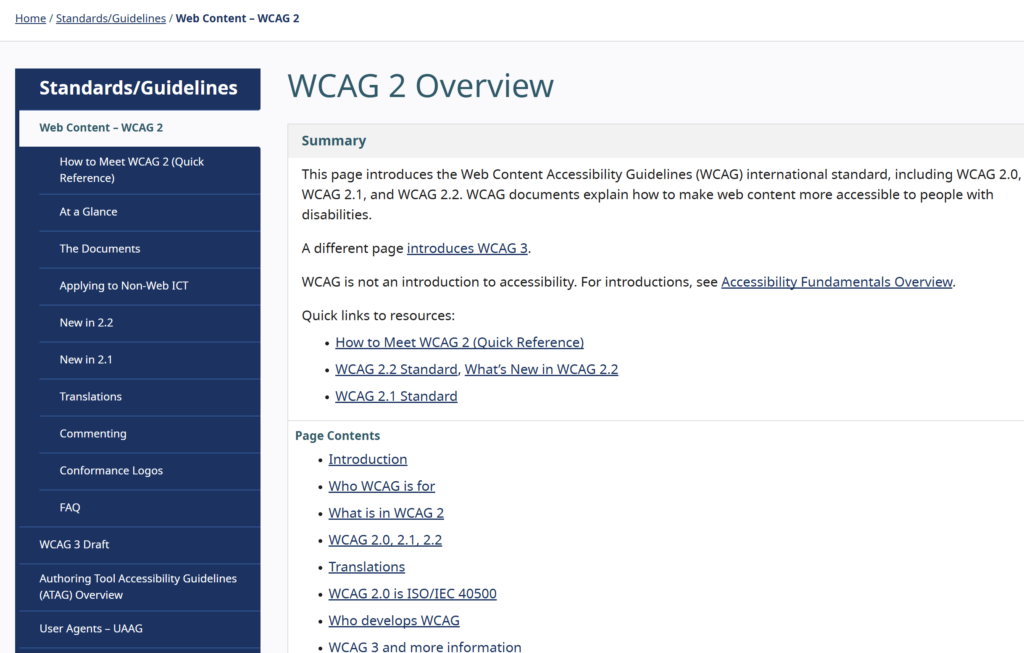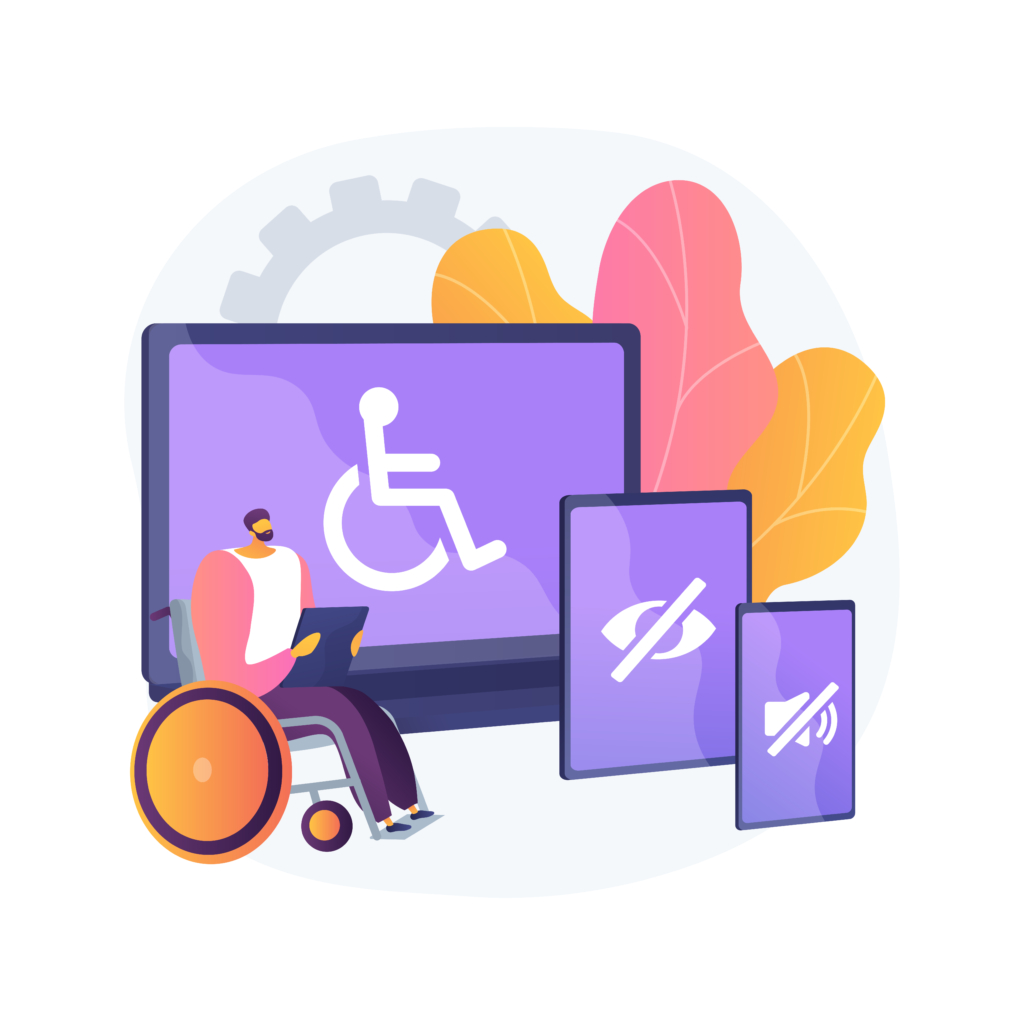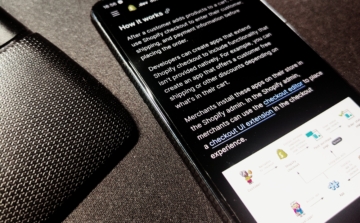Table of Contents
Introduction
In the digital age, ADA compliance Shopify has become a crucial aspect of online commerce. As the e-commerce landscape continues to grow, ensuring that your Shopify store is accessible to all users—regardless of their abilities—is not just a legal obligation but also a moral imperative. With the rise of ADA compliance lawsuits targeting online businesses, it’s essential for Shopify store owners and agencies to prioritize accessibility. This article delves into the practical steps agencies can take to implement accessibility for Shopify stores, helping them meet web accessibility standards and improve the shopping experience for everyone.

Accessibility is essential for Shopify stores for several reasons. First, there are over 1 billion people worldwide living with some form of disability. This demographic represents a significant market opportunity. By making your online store accessible, you not only comply with regulations but also unlock the potential for increased sales and customer loyalty.
Moreover, an accessible website can enhance your brand’s reputation. Consumers are increasingly aware of social issues and are more likely to support businesses that demonstrate inclusivity. By prioritizing accessibility, Shopify store owners can foster a positive brand image and build lasting relationships with customers.

As we explore the importance of accessibility in Shopify stores, we will also discuss the challenges that many store owners face in implementing effective solutions. Understanding these challenges is the first step toward creating a more inclusive online shopping environment.
In this article, we will detail the necessary steps for conducting an accessibility audit, discuss popular accessibility methods and why they may fall short, and offer best practices for ensuring your Shopify store is compliant with WCAG guidelines. By the end of this article, you will have a clearer understanding of how to make your Shopify store accessible and why it matters in the current e-commerce landscape.
Why Accessibility is Crucial for Shopify Stores
In today’s digital marketplace, accessibility is not just a feature; it’s a necessity for Shopify store owners. With over 1 billion people worldwide living with some form of disability, businesses that prioritize accessibility can tap into a significant and often underserved market. Understanding the importance of accessibility can lead to numerous benefits, both socially and economically.

The Market Opportunity
Statistics show that approximately 15% of the global population experiences some form of disability. This includes visual impairments, hearing loss, cognitive disabilities, and mobility challenges. By making your Shopify store accessible, you not only comply with legal standards but also open your business to a broader audience.
Studies reveal that companies that embrace inclusivity and accessibility can see an increase in sales. Accessible websites enhance user experience, leading to higher conversion rates and customer retention. When individuals with disabilities can easily navigate your store, they are more likely to complete purchases and return for future transactions.
Enhancing Brand Reputation
Accessibility also plays a significant role in shaping your brand’s reputation. In an era where consumers are increasingly conscious of social responsibility, businesses that prioritize accessibility are seen as more trustworthy and inclusive. Positive brand perception can lead to increased customer loyalty and word-of-mouth referrals.
When potential customers see that your Shopify store is designed with accessibility in mind, they are more likely to feel valued and respected. This not only enhances their shopping experience but also contributes to a positive association with your brand.
Legal Compliance and Risk Mitigation
The legal landscape surrounding accessibility is evolving, with an increasing number of ADA lawsuits targeting e-commerce businesses. Failing to comply with web accessibility standards can expose your Shopify store to legal risks and potential lawsuits. By proactively implementing accessibility features, you can mitigate these risks and ensure compliance with regulations like the ADA and WCAG guidelines.
Conclusion
In summary, making your Shopify store ADA compliant is critical for tapping into a valuable market, enhancing brand reputation, and ensuring legal compliance. As we delve deeper into the steps for conducting an accessibility audit and implementing best practices, it’s essential to recognize that accessibility is not just a checkbox; it’s an ongoing commitment to inclusivity.
Understanding Accessibility Standards
To create an inclusive online shopping experience, it is essential for Shopify store owners and agencies to understand and implement web accessibility standards. The most widely recognized framework for web accessibility is the Web Content Accessibility Guidelines (WCAG), developed by the World Wide Web Consortium (W3C). These guidelines provide a comprehensive set of recommendations for making web content more accessible, particularly focusing on ADA compliance.

Overview of WCAG
The WCAG guidelines are organized around four key principles, often referred to as POUR:
- Perceivable: Information and user interface components must be presented in a way that can be perceived by all users. This includes providing text alternatives for non-text content, ensuring that content is adaptable, and making it easier for users to see and hear content.
- Operable: User interface components and navigation must be operable by all users. This principle emphasizes the need for keyboard accessibility, enough time to read and use content, and providing alternatives for users who cannot use a mouse.
- Understandable: Information and operation of the user interface must be understandable. This means that text should be readable and understandable, and web pages should operate in predictable ways.
- Robust: Content must be robust enough to be reliably interpreted by a wide variety of user agents, including assistive technologies. This encourages developers to use standard coding practices to support compatibility with current and future technologies.

Key Principles of Shopify Accessibility to Consider
When designing a Shopify store, it’s important to incorporate the following key principles based on WCAG, which align with accessibility best practices:
- Text Alternatives: Use descriptive alt text for images, so users with visual impairments can understand the content. This is crucial for improving website accessibility.
- Keyboard Navigation: Ensure that all interactive elements can be accessed using a keyboard, as some users may not be able to use a mouse.
- Color Contrast: Maintain a sufficient contrast ratio between text and background colors to improve readability for users with visual impairments.
- Clear Language: Use simple and clear language in product descriptions and navigational elements to assist users with cognitive disabilities.
- Responsive Design: Ensure that the store is responsive and functions well on a variety of devices, including screen readers and mobile devices.
By understanding and implementing these accessibility standards, Shopify store owners can ensure compliance with ADA regulations while enhancing the shopping experience for all users, including those with disabilities.
Conducting an Accessibility Audit for Shopify

Conducting an accessibility audit is a crucial step for Shopify store owners and agencies aiming to ensure ADA compliance and enhance the accessibility for online stores. An audit helps identify barriers that may prevent users with disabilities from effectively navigating and utilizing the website. Here’s a comprehensive guide on how to perform an accessibility audit for your Shopify store.
Steps to Perform an Accessibility Audit on Your Store
- Preliminary Assessment: Begin by evaluating the current state of your Shopify store. This includes reviewing your store’s design, layout, content, and navigation. Document any immediate concerns related to accessibility.
- Utilize Accessibility Tools: Leverage a combination of automated and manual testing tools to identify accessibility issues. Some popular Shopify accessibility tools include:
- WAVE: This tool helps identify accessibility and Web Content Accessibility Guidelines (WCAG) compliance issues.
- axe: A browser extension that provides detailed reports on accessibility violations and recommendations for remediation.
- Lighthouse: A built-in tool in Chrome Developer Tools that audits web pages for performance, accessibility, and SEO.
- Conduct Manual Testing: Automated tools are helpful, but they often miss nuanced accessibility issues. Perform manual testing by navigating your store using only a keyboard and screen reader. This process will help you identify issues related to keyboard navigation and screen reader compatibility.
- Review Content for Accessibility: Assess your product descriptions, images, and other content for accessibility features. Ensure that:
- All images have descriptive alt text.
- Videos have captions and transcripts.
- Text is written in clear, simple language.
- Check for Color Contrast: Use color contrast checkers to ensure that text is readable against background colors. The contrast ratio should meet WCAG guidelines to accommodate users with visual impairments.
- Evaluate Forms and Inputs: Ensure that all forms are accessible. Check that:
- Labels are associated with their respective input fields.
- Error messages are clearly communicated and easy to understand.
- Users can navigate forms using keyboard shortcuts.
Recommended Company for Accessibility Audits
For those looking to conduct a thorough and professional accessibility audit, partnering with an experienced agency can be beneficial. One reputable company that specializes in accessibility audits is:
- Level Access: Renowned for its comprehensive approach to digital accessibility, Level Access offers a range of services, including accessibility audits, training, and ongoing support to ensure compliance with ADA and WCAG standards.
After utilizing their services, consider reaching out to us at CodeQ for additional support in implementing the necessary changes to improve website accessibility in your Shopify store. Our expertise in making Shopify stores accessible can help you navigate any challenges you may encounter, ensuring that your store meets web accessibility standards effectively. We can assist in applying accessibility best practices and conducting a detailed accessibility audit for Shopify to ensure your e-commerce platform is compliant and user-friendly.
Common Accessibility Errors and How to Avoid Them

During your audit, you may encounter several common accessibility errors. Here are a few examples and how to address them:
- Missing Alt Text: Ensure that all images have descriptive alt text. This allows users with visual impairments to understand the content conveyed by images.
- Inaccessible Navigation: Check that navigation menus are operable via keyboard shortcuts. Make sure dropdown menus are accessible and can be navigated without using a mouse.
- Poor Color Contrast: Use tools to check the contrast ratio of text and background colors. Adjust colors as necessary to meet WCAG standards.
- Unclear Labels: Ensure that all form fields have associated labels for clarity. Avoid using placeholders as the only means of labeling input fields.
By systematically addressing these common barriers, Shopify store owners can create a more accessible and user-friendly shopping experience.
Popular Accessibility Methods and Why They May Fall Short

Overview of Commonly Used Methods for Improving Accessibility
In the pursuit of making Shopify stores accessible, various methods and tools are commonly employed by store owners and developers. These methods aim to identify and rectify accessibility issues, ensuring compliance with standards like the ADA and WCAG. The most prevalent methods include:
- Automated Testing Tools
- Automated testing tools offer a quick way to scan websites for accessibility issues. Tools such as WAVE, axe, and Lighthouse can identify common problems like missing alt text, insufficient color contrast, and improper heading structures. They provide reports that highlight these issues, allowing developers to address them swiftly and improve website accessibility.
- Accessibility Overlays
- Accessibility overlays are third-party solutions that can be integrated into websites to enhance accessibility. These tools often provide features like text resizing, color contrast adjustments, and keyboard navigation enhancements. They are marketed as quick fixes for accessibility compliance and can be implemented without significant changes to a website’s code, but may not fully meet web accessibility standards.
- Manual Testing
- Manual testing involves assessing a website’s accessibility through user experience. This includes navigating the site using only a keyboard, testing with screen readers, and reviewing content for clarity and usability. While time-consuming, manual testing uncovers nuanced issues that automated tools may miss, ensuring a more comprehensive approach to improving website accessibility.
- Accessibility Training and Workshops
- Many agencies offer training sessions and workshops to educate developers and content creators about accessibility best practices. These sessions aim to instill a culture of accessibility within organizations, promoting long-term commitment to inclusive design and compliance with ADA regulations.
Discussion on the Limitations of These Methods
While the aforementioned methods can significantly contribute to improving accessibility, they also have notable limitations that should be considered:
- Automated Testing Tools
- Automated tools are useful for identifying surface-level issues, but they often fail to catch more complex accessibility problems. For example, they may not adequately assess the usability of dynamic content or the context of images. Additionally, automated tools can generate false positives, leading to unnecessary work and confusion for developers, particularly when addressing ADA lawsuits related to e-commerce.
- Accessibility Overlays
- While overlays can provide quick fixes, they are often criticized for being superficial solutions that do not address underlying accessibility issues in the code. Overlays can create a false sense of compliance, as they might mask problems rather than resolve them. Furthermore, they can interfere with the website’s native functionality and user experience, particularly for those relying on assistive technologies, thus failing to adhere to WCAG guidelines for Shopify.
- Manual Testing
- Manual testing, though thorough, can be resource-intensive and time-consuming. It requires skilled personnel who understand accessibility principles and can effectively identify issues. This method may not be feasible for all Shopify store owners, especially smaller businesses with limited resources, thereby impacting their ability to make their stores accessible.
- Accessibility Training and Workshops
- While training is essential, its effectiveness depends on the participants’ engagement and willingness to implement what they have learned. Without ongoing support and a commitment to accessibility from leadership, the benefits of training may not be fully realized. This is critical for maintaining accessibility over time and ensuring ongoing compliance with ADA regulations.
In conclusion, while these popular accessibility methods can help improve the inclusivity of Shopify stores, it is crucial to recognize their limitations. A comprehensive approach that combines automated tools, manual testing, and ongoing education will yield the best results in creating a truly accessible online shopping experience. Store owners should be proactive in addressing accessibility as an ongoing commitment rather than a one-time fix, ensuring that their platforms remain compliant and welcoming to all users, thus effectively making Shopify stores accessible.
Tools and Resources for Shopify Support Agencies
Overview of Essential Accessibility Testing Tools
To effectively implement accessibility best practices in Shopify stores, support agencies should utilize a variety of tools designed to identify and resolve accessibility issues. Some essential accessibility testing tools include:
- WAVE
- WAVE is a web accessibility evaluation tool that allows users to analyze web pages for accessibility issues. It provides visual feedback on the accessibility of content by highlighting potential problems directly within the webpage, making it easier to understand where improvements are needed.
- axe
- The axe accessibility testing tool is a powerful solution for developers that integrates seamlessly with browsers. It provides detailed reports on accessibility violations, helping developers fix issues in real-time and ensuring compliance with WCAG guidelines.
- Lighthouse
- Lighthouse is an open-source tool for auditing the quality of web pages, including accessibility. It generates reports that include accessibility scores and recommendations for improvement, offering a comprehensive overview for store owners and developers to enhance their Shopify stores.
- Color Contrast Analyzers
- Tools like the Contrast Checker or Color Safe allow store owners to ensure that their color palettes meet accessibility standards. These tools help verify that text is readable against its background, which is crucial for those with visual impairments.
- Screen Readers
- Testing with screen readers like JAWS, NVDA, or VoiceOver is essential for understanding how accessible a site is to users who rely on these technologies. This hands-on approach ensures that navigation and content are user-friendly for individuals with disabilities.
Shopify Apps and Themes that Support Accessibility
In addition to testing tools, specific Shopify apps and themes can significantly enhance accessibility. Some noteworthy options include:
- Accessibility Enabler
- This app provides features such as text enlargement, color adjustments, and keyboard navigation enhancements, making it easier for users with disabilities to navigate the store.
- EasyColor
- EasyColor helps shop owners ensure that their color choices meet accessibility standards by offering color adjustments and contrast checks. This can help improve the overall user experience for those with visual impairments.
- Accessible Shopify Themes
- Several Shopify themes are designed with accessibility in mind. These themes adhere to web accessibility standards, ensuring that the layout, navigation, and content are accessible to all users. Choosing an accessible theme from the start can save considerable time and effort in retrofitting accessibility.
The Role of Agencies in Implementing and Supporting Accessibility
Agencies play a crucial role in helping Shopify store owners implement accessibility measures. Their responsibilities include:
- Conducting Accessibility Audits
- Agencies can perform thorough accessibility audits to identify issues and provide actionable recommendations to improve compliance with ADA regulations and WCAG guidelines.
- Providing Training and Support
- Offering training sessions for development teams and staff can foster a deeper understanding of accessibility principles. This empowers store owners to maintain accessibility as they update their sites.
- Implementing Best Practices
- Agencies should guide clients in implementing accessibility best practices throughout the design and development process, ensuring that accessibility is considered from the initial stages.
- Ongoing Monitoring and Support
- Accessibility is not a one-time task; agencies should offer ongoing monitoring and support to ensure that any new content or features added to the store remain compliant and accessible over time.
In summary, various tools and resources are available to help Shopify support agencies enhance accessibility for their clients. By utilizing these tools and adopting a proactive approach, agencies can ensure that Shopify stores meet web accessibility standards and provide an inclusive shopping experience for all users.
Best Practices for Accessibility in Shopify Stores
Key Elements to Incorporate in Design
Creating an accessible Shopify store requires a thoughtful approach to design. Here are key elements to consider:
- Semantic HTML
- Using semantic HTML elements (like
<header>,<nav>,<main>, and<footer>) helps screen readers understand the structure of the page. This practice is essential for ensuring compliance with web accessibility standards and enhances navigation for users relying on assistive technologies.
- Using semantic HTML elements (like
- Descriptive Alt Text for Images
- Every image on your Shopify store should have descriptive alt text that conveys the content and purpose of the image. This is crucial for users with visual impairments who rely on screen readers. Properly implemented alt text improves accessibility for online stores and adheres to WCAG guidelines.
- Keyboard Navigation
- Ensure that all interactive elements, such as buttons, links, and forms, are navigable using a keyboard alone. This is vital for users who cannot use a mouse and helps prevent ADA lawsuits related to accessibility barriers.
- Consistent Layout and Navigation
- A consistent layout and navigation scheme allow users to familiarize themselves with your store, making it easier for them to find products and complete purchases. This consistency is a best practice that enhances the overall user experience and accessibility.
- Clear and Readable Typography
- Use legible fonts and maintain sufficient contrast between text and background colors. This is particularly important for users with visual impairments. Tools like color contrast analyzers can assist in ensuring compliance with accessibility best practices.
Content and Layout Tips for Enhanced Accessibility
- Headings and Structure
- Use headings (H1, H2, H3) properly to create a clear hierarchy of information. This structure helps both users and assistive technologies navigate the content effectively. Proper heading use is a key aspect of making Shopify stores accessible.
- Provide Text Alternatives for Multimedia
- Include captions and transcripts for videos and audio content. This ensures that users with hearing impairments can access the information presented in multimedia formats, aligning with ADA compliance and WCAG guidelines.
- Error Identification and Suggestions
- When users encounter errors in forms, provide clear messages that identify the issue and suggest corrections. This approach not only improves accessibility but also enhances user satisfaction and reduces frustration.
- Mobile Responsiveness
- Ensure that your Shopify store is mobile-friendly. Many users access online stores via mobile devices, and ensuring that your site is fully accessible on all devices is a fundamental aspect of modern web design.
Maintaining Accessibility Over Time
- Regular Accessibility Audits
- Conduct regular accessibility audits to identify new issues that may arise as content and features are updated. Ongoing evaluations help maintain compliance with web accessibility standards and reduce the risk of ADA lawsuits.
- Staying Informed on Accessibility Guidelines
- Continuously educate yourself and your team about updates to accessibility guidelines, such as WCAG. Staying informed allows you to implement necessary changes proactively, ensuring your Shopify store remains accessible.
- User Feedback
- Encourage feedback from users regarding accessibility issues they may encounter. This input can provide valuable insights into the effectiveness of your accessibility measures and highlight areas for improvement.
- Incorporating Accessibility in Future Designs
- As you develop new features or redesign your store, incorporate accessibility considerations from the outset. This proactive approach will help ensure that your store remains compliant and user-friendly for everyone.
In conclusion, implementing accessibility best practices in Shopify stores enhances the user experience for all customers. By focusing on key design elements, maintaining a commitment to accessibility, and regularly auditing your website, you can create an inclusive online shopping environment that meets the needs of all users. This not only improves compliance with ADA regulations but also fosters brand loyalty and trust among your customer base.
Successful Accessibility Implementations in Shopify: Case Studies and Insights
Case Studies of Shopify Stores That Effectively Implemented Accessibility
To illustrate the benefits of implementing accessibility measures, let’s explore a few case studies of Shopify stores that have successfully enhanced their accessibility features:
- Store A: Fashion Retailer
- Background: A fashion retailer recognized that a significant portion of their customer base included individuals with visual impairments. They sought to improve their website’s accessibility to better serve these customers.
- Implementation: The retailer conducted a thorough accessibility audit using tools like WAVE and axe. They provided descriptive alt text for all product images, improved color contrast, and ensured keyboard navigation throughout the site.
- Results: Post-implementation, the store reported a 20% increase in sales from users who identified as having disabilities. Customer feedback highlighted the ease of navigation and the improved shopping experience.
- Store B: Home Goods
- Background: A home goods store wanted to expand its market by ensuring their online store was usable for all customers, including those with disabilities.
- Implementation: They engaged an agency to conduct an accessibility audit and implement recommended changes. This included adding captions to videos, improving form usability, and ensuring compliance with WCAG guidelines.
- Results: The store not only improved its accessibility but also received positive media coverage, reinforcing their brand reputation as an inclusive retailer. Their customer base expanded, and they saw increased engagement on social media platforms.
- Store C: Health and Wellness
- Background: A health and wellness store recognized that many of their products were beneficial for individuals with disabilities but their site was not accessible.
- Implementation: They adopted an accessible Shopify theme, implemented proper heading structures, and provided text alternatives for all multimedia content. They also conducted training for their staff on accessibility best practices.
- Results: The store experienced a 30% increase in customer inquiries and purchases from customers with disabilities. Additionally, they received positive feedback from advocacy groups praising their commitment to accessibility.
Lessons Learned and Insights from These Examples
- Accessibility as a Competitive Advantage
- These case studies highlight that accessibility is not just a legal requirement but also a competitive advantage. By making their stores accessible, these businesses were able to reach a broader audience and increase sales.
- The Importance of Regular Audits
- Conducting regular accessibility audits is crucial for maintaining compliance and ensuring that new content does not introduce barriers. Continuous improvement should be a key focus for all Shopify store owners.
- Customer Engagement and Feedback
- Actively seeking feedback from customers about their accessibility experiences can lead to valuable insights and improvements. Engaging with customers fosters loyalty and demonstrates a commitment to inclusivity.
- Collaboration with Experts
- Partnering with accessibility experts or agencies can significantly streamline the implementation process. Their expertise can help businesses navigate complex accessibility guidelines and ensure robust compliance.
- Training and Awareness
- Providing ongoing training for staff on accessibility best practices is essential. This ensures that everyone involved in the store’s operation understands the importance of accessibility and can contribute to maintaining it.
In summary, the successful implementation of accessibility features in these Shopify stores not only improved their compliance with ADA regulations and WCAG guidelines but also enhanced customer satisfaction and brand loyalty. By learning from these examples, other Shopify store owners can take actionable steps toward creating more inclusive online shopping experiences.
Conclusion: The Path to an Accessible Shopify Store
In today’s digital landscape, ensuring ADA compliance and enhancing accessibility for online stores is not just a legal obligation but also a vital aspect of good business practice. Implementing accessibility measures can lead to significant benefits, including increased sales, improved customer satisfaction, and enhanced brand loyalty.
Key Takeaways for Shopify Store Owners

Prioritize Accessibility from the Start
When building or redesigning a Shopify store, make accessibility a fundamental part of the planning and design process. This proactive approach will save time and resources in the long run and ensure compliance with web accessibility standards.
Leverage Available Tools and Resources
Utilize accessibility testing tools, apps, and themes available in the Shopify ecosystem. These resources can streamline the process of auditing and improving your store’s accessibility, making it easier to adhere to WCAG guidelines.
Engage with Experts
As an agency, we recommend utilizing our Ecommerce Support services, which provide comprehensive assistance in implementing WCAG standards. Our experience working with companies like Level Access allows us to offer thorough accessibility audits. These audits not only verify your site’s current compliance status but also provide detailed reports on ADA compliance implementation, which serves as a robust defense against potential lawsuits.
/
Educate Your Team
Provide ongoing training for your staff regarding accessibility best practices. Empowering your team with knowledge ensures that accessibility remains a priority as your store evolves.
Solicit Customer Feedback
Encourage your customers to share their experiences regarding accessibility. This feedback can provide insights into areas for improvement and help you stay attuned to the needs of all users.
Commit to Continuous Improvement
Accessibility is an ongoing journey. Regularly evaluate your store for new accessibility issues, especially as you add content or features. Staying informed about changes to accessibility standards will help you maintain compliance and enhance the user experience.
By taking these steps, Shopify store owners can create an inclusive online shopping environment that welcomes all users, regardless of their abilities. This commitment not only mitigates the risk of ADA lawsuits but also positions businesses as leaders in inclusivity within the e-commerce space.
Final Thoughts
As the e-commerce landscape continues to evolve, the importance of improving website accessibility cannot be overstated. With a growing awareness of the need for inclusivity, businesses that prioritize accessibility will not only comply with legal requirements but also foster a loyal customer base and drive sales.
By implementing the strategies outlined in this article and committing to accessibility as an integral part of their operations, Shopify store owners can play a significant role in shaping a more inclusive digital world.






